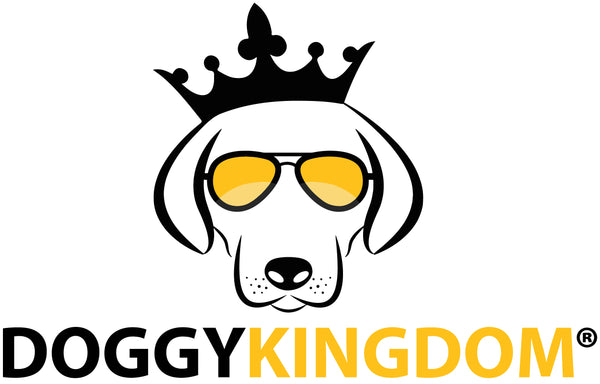How to Safely Clean Your Dog's Toys
Share
Dogs, like children, love their toys. Whether it's a squeaky ball, a plush chewy, or a durable rubber bone, these toys are an essential part of their lives, providing comfort, companionship, and mental stimulation. However, just like any other item in your home, dog toys can harbor dirt, bacteria, and even mold if not properly cleaned.
Regular cleaning of your dog's toys is not only essential for their health but also for the longevity of the toys. Here's how you can safely clean your dog's toys and ensure a healthy playtime experience.
Read Labels and Material Information:
Before you start cleaning your dog's toys, it's crucial to understand the materials they are made of. Different toys require different cleaning methods. Plush toys, for example, may not withstand the same cleaning process as rubber or plastic toys. Always check the labels or packaging for any specific cleaning instructions provided by the manufacturer.
Regular Inspection
Periodically inspect your dog's toys for signs of wear and tear. If a toy is falling apart or has small, detachable parts, it's time to replace it. Broken toys can pose a choking hazard or cause injury to your pet. Regularly removing damaged toys from your dog's collection ensures they play with safe and intact items.
Non-Toxic Cleaning Solutions
When cleaning your dog's toys, opt for pet-safe and non-toxic cleaning solutions. Mild dish soap or pet-friendly antibacterial sprays are generally safe choices. Avoid using harsh chemicals, bleach, or strong disinfectants as they can leave residue harmful to your dog. Vinegar mixed with water is a natural and safe option for cleaning toys; it acts as a disinfectant without posing any health risks.
Machine-Washable Toys
Many fabric-based dog toys are machine washable. Always check the labels to confirm if they are machine-safe. Place these toys in a mesh laundry bag to protect them during the wash cycle. Use a gentle detergent, and opt for a cold or lukewarm water setting. After washing, thoroughly air dry the toys before giving them back to your dog.
Disinfecting Hard Toys
For hard toys made of rubber, plastic, or nylon, a good practice is to regularly disinfect them. Submerge the toys in a solution of equal parts water and white vinegar. Let them soak for 10-15 minutes, then scrub with a brush to remove dirt and bacteria. Rinse the toys thoroughly with clean water and air dry before returning them to your dog.
Sanitizing Chew Toys
Chew toys with crevices or irregular surfaces can trap dirt and bacteria. A safe way to clean them is by using a mixture of water and mild dog-safe soap. Use a soft brush or an old toothbrush to clean the grooves and corners. Ensure you rinse the toy thoroughly to remove any soap residue, which can be harmful if ingested.
Drying Properly
After cleaning, it's crucial to let the toys dry completely. Moisture can encourage the growth of mold and mildew, which are harmful to your dog's health. Place the cleaned toys in a sunny spot or use a fan to speed up the drying process. Ensure they are entirely dry before allowing your dog to play with them again.
Rotate Toys
Consider having a rotation system for your dog's toys. By cycling through a selection of toys, you allow ample time for cleaning and drying between uses. This practice ensures that your dog always has clean and safe toys to play with.
Supervision During Play
Lastly, always supervise your dog during playtime, especially if they are playing with a new toy. This allows you to observe their behavior and ensure the toy is suitable for their play style. Additionally, supervision prevents your dog from destroying the toy quickly, minimizing the chances of swallowing small parts.
Regularly cleaning your dog's toys not only maintains their hygiene but also promotes a safe and enjoyable playtime experience. By choosing appropriate cleaning methods and being mindful of the materials, you can ensure your furry friend's toys remain a source of joy while keeping them free from harmful germs and bacteria.



